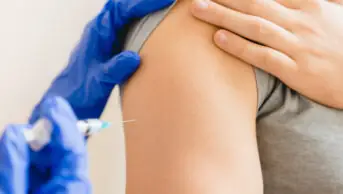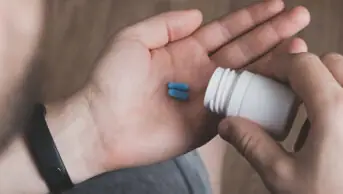
VAN D. BUCHER/SCIENCE PHOTO LIBRARY
Transdermal dosage forms are the most successful non-oral systemic drug delivery systems,1 accounting for over 12 per cent of the global drug delivery market. In 2010, the transdermal delivery market was valued at $21.5bn, and predicted to reach $31.5bn by 2015.2 The most popular transdermal dosage forms are patches, followed by gels and liquid sprays. The first transdermal patch, a three-day patch delivering scopolamine for the treatment of motion sickness, was approved by the Us Food and drug administration in 1979 (licensed for use in the UK in march 2001). since then, several active pharmaceutical compounds with a diverse range of therapeutic indications have been successfully developed and marketed as transdermal patches. examples of such active pharmaceutical ingredients include nicotine for smoking cessation therapy, estradiol for the management of menopausal symptoms, methylphenidate for attention deficit hyperactivity disorder, fentanyl for the management of chronic pain, rivastigmine for dementia, rotigotine for Parkinson’s disease and nitroglycerin for the management of angina.
Transdermal patches for passive transdermal drug delivery consist of the backing membrane, adhesive and release liner. There are two main patch designs: the reservoir and drug-in-adhesive. The drug-in-adhesive design incorporates the drug directly into the adhesive layer. The reservoir design houses the drug in a polymeric matrix that is separated from the adhesive layer via a membrane.
The transdermal route is an accessible route of drug administration, resulting in improved patient compliance. Transdermal dosage forms are designed to provide controlled drug release into the systemic circulation without the fluctuations (“spike levels”) in drug circulating concentrations seen after oral delivery. It bypasses the gastrointestinal (GI) tract and liver metabolism, providing a greater period of drug release than controlled release oral dosage forms. some transdermal patches can release drug for up to seven days, representing an obvious decrease in administration frequency. GI side effects and pain of intravenous injections are avoided, and drug administration can be easily discontinued by removal of the transdermal system from the skin.
Drug candidates
Drug candidates need to possess certain therapeutic and physicochemical properties that enable passive diffusion across the stratum corneum at therapeutically effective amounts.
These properties are:
- Therapeutic potency — Because of the low permeability of skin, only potent drugs, therapeutically effective in low doses (up to 20mg), can be formulated into passive transdermal dosage forms;
- Low molecular weight (less than 500Da) — Drug diffusional speed across the stratum corneum is inversely proportional to its molecular size (eg, the molecular weight of nicotine is 162Da);
- Aqueous solubility — The drug needs to have an aqueous solubility of more than 1mg/ml in order to be removed by the blood supply
- Optimal partition coefficient within the range logKo/w = 1–3 — The partition coefficient is a measure of the lipophilicity of the drug and its tendency to partition to the lipophilic stratum corneum. It can be described by the partition coefficient between octanol and water, where octanol mimics the lipophilic stratum corneum and water mimics the vehicle;
- Melting point <200C — According to the “ideal solution theory”, the lower the melting point of the drug the higher its solubility in the stratum corneum lipids.
Research and development
One of the biggest challenges to transdermal drug delivery is the limited number of drugs that possess the ideal physicochemical and therapeutic properties. To tackle this challenge, research has focused on methods to enhance transdermal permeation of drugs with less favourable properties. Such methods can reversibly alter the stratum corneum structure thus allowing ingress of hydrophilic or large molecules (eg, chemical enhancers); improve the lipophilicity of small drug molecules (eg, prodrug design); or bypass the stratum corneum via mechanical means (eg, microneedles, jet injection) or an energy source (iontophoresis, electroporation, sonophoresis). The choice of enhancement method has to be tailored to the specific physicochemical and therapeutic properties of the drug candidate. For example, prodrug design and the application of chemical enhancers can be useful for hydrophilic drug candidates with low molecular weight. When molecular weight poses the main limitation, use of a technological approach would be more efficient. The development of new patch designs —with active mechanisms for transdermal drug delivery —into commercial products requires balancing enhanced transdermal drug permeation with safety and cost-effectiveness.
CNS and pain relief
The development of transdermal systems for the delivery of central nervous system and pain-relief medicines is currently part of the research pipeline for several pharmaceutical companies due to ease of application, increased patient compliance and safety of transdermal drug delivery systems.
ALZA developed Ionsys, an iontophoretic patch system containing fentanyl, for the short-term management of acute postoperative pain in adult patients requiring opioid analgesia during hospital admission. Vyteris developed LidoSite, a topical iontophoretic patch containing lidocaine hydrochloride and epinephrine to provide fast analgesic effect before venepuncture and dermatological procedures.
Nupathe has designed Zelrix, an iontophoretic patch containing sumatriptan, for the treatment of acute migraine. Approval of Zelrix by the FDA is still pending subject to provision of additional information.
Vyteris is also conducting research on the design of an energy-assisted patch containing zolmitriptan for the management of acute migraine. The effectiveness of iontophoretic transdermal delivery of fibroblast growth factors for the treatment of peripheral artery disease, stubborn skin ulcers and burns3 has recently been confirmed via in vitro studies. This represents a significant finding considering that such medicines are inactivated when given by mouth and show various side effects when administered by injection.
Microneedles
Microneedles have shown promise for the transdermal delivery of a wide range of drugs, peptides and vaccines.4 Microneedle devices consist of micron-scale (up to about 500μm) needle arrays made from silicon, metal, or biodegradable or biocompatible hydrogels (ie, “dissolving” microneedles). Due to the small needle size, they cause no pain and they can be used either for piercing the skin before application of a transdermal dosage form or can be drug-coated or loaded.
The skin is an attractive site for vaccine delivery due to its ability to evoke immune response. The US National Institute of Health has recently awarded a five-year grant of $10m to support the design of dissolvable microneedles for the transdermal delivery of influenza vaccine. Preliminary studies on mice showed improved immunity to influenza compared with intramuscular hypodermic influenza vaccine.5
Microneedles that target dendritic skin cells can potentially boost the body’s immune response, as a current multicentre collaborative study is aiming to prove. The aim of the study is to design a microneedle transdermal device that would prevent the spread of life-threatening infections such as HIV and tuberculosis.6 Zosano Pharma is currently evaluating MacroFlux microneedle technology for the transdermal delivery of teriparatide, a recombinant form of parathyroid hormone, as an alternative to daily injections for the treatment of severe osteoporosis. Another recent investigation involves the combination of a microneedle transdermal patch with a “touch-sensitive” pump system. The novelty of this system lies in that it requires no battery. The pump is activated by the heat of patient’s finger, creating sufficient pressure to push the drug through the microneedles.7
Transdermal glucose
Transdermal glucose monitoring for diabetic patients is also under research and development. Echo Therapeutics has recently designed a non-invasive transdermal device (Symphony tCGM System) with a wireless biosensor for the continuous monitoring of blood glucose. This device can be used at home or in hospital and it is due to receive FDA approval in 2013. In addition, patch pump systems for the transdermal delivery of insulin have been on the research and development pipeline of several pharmaceutical companies, since the collapse of the inhaled insulin market in 2008, as an alternative, patient-friendly delivery method for the management of diabetes. Currently, there are four FDA-approved insulin transdermal patch pump systems and several on developmental stage.8
Conclusion
It is evident that the transdermal market is on the increase largely due to patient demand for transdermal dosage forms in conjunction with the adoption of technological approaches that enable the transdermal delivery of a diverse portfolio of therapeutic compounds.
References
1 Naik A, Kalia YN, Guy RH. Transdermal drug delivery: overcoming the skin’s barrier function. PSTT 2000;3:318–26.
2 Transdermal delivery market predicted to reach $31.5 billion by 2015: PharmaLive special report. Available at: www.pmpnews.com (accessed 19 December 2011).
3 Dubey S, Perozzo R, Scapozza L, Kalia YN. Noninvasive transdermal iontophoretic delivery of biologically active human basic fibroblast growth factor. Molecular Pharmaceutics 2011;8:1322–31.
4 Arora A, Prausnitz M, Mitragotri S. Micro-scale devices for transdermal drug delivery. International Journal of Pharmaceutics 2008;364:227–36.
5 Sullivan SP, Koutsonanos DG, del Pilar Martin M, Lee JW, Zarnitsyn V, Choi S-O et al. Dissolving polymer microneedle patches for influenza vaccination. Nature Medicine 2010;16:915–20.
6 Could targeting the skin help prevent the spread of HIV? Available at: www.sciencedaily.com (accessed 19 December 2011).
7 Data from Purdue University: advanced knowledge in transdermal delivery. Available at: www.newsrx.com (accessed 19 December 2011).
8 Insulin patch pumps: device, markets, players and prospects. Available at: www.greystoneassociates.org (accessed 19 December 2011).


